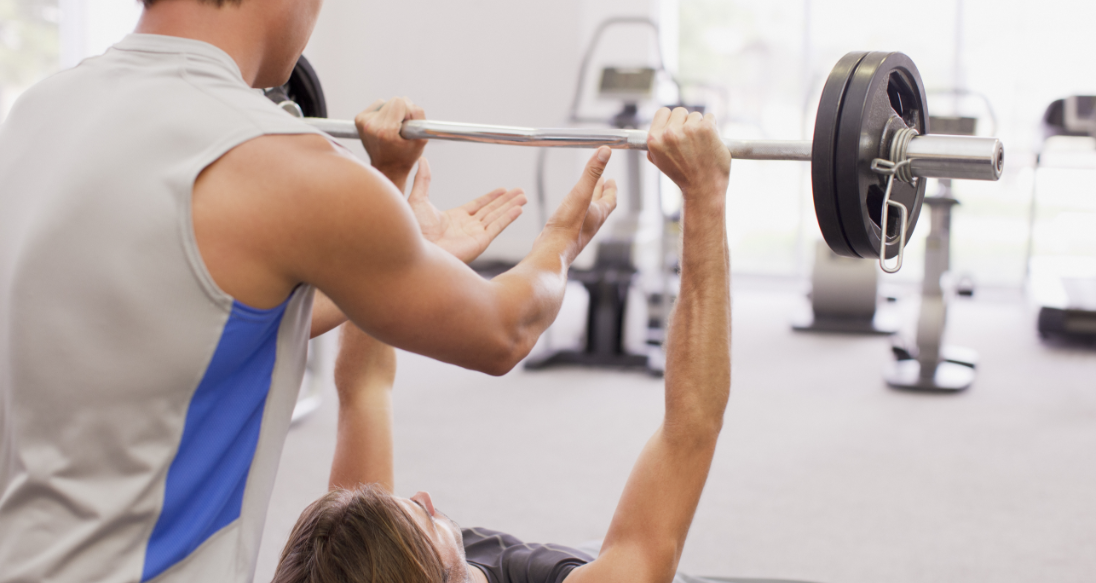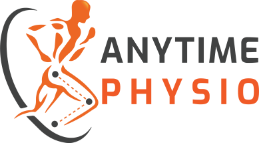
If you have been lifting weights at the gym for any length of time, no doubt you or someone you've met at the gym has experienced shoulder pain. Unless there has been a serious injury, the cause of shoulder pain is from an overload of one of the structures of the shoulder. This could be due to poor form, muscle imbalances such as muscle weakness, poor muscle activation patterns or muscle tightness. Overzealous progression of the training program can also be a factor. In this post, we go over 3 exercises that our Brisbane-based physiotherapists use to help our clients get on top of sore shoulders.
Bench press shoulder pain
You may experience shoulder pain due to your posture with bench press. Ensure that you pull the shoulders back by squeezing the shoulder blades together and push up at mid chest level. If the shoulders are rounded forward during the exercise, they will be more downwardly or internally rotated causing impingement or excessive stress on the rotator cuff muscles as you push up. Also, check your range of extension by pulling your elbows backwards in standing. Be careful with the depth of bench press as it should not pass the end-range of your shoulder which puts excessive stress on the joint. Likewise, do not flare out the elbows too much as it can decrease the space in the shoulder joint as you bench up.
Is the bench press bad for shoulders?
Bench press is not harmful to the shoulders with the correct technique. Some conditions that may be related to painful bench press include shoulder impingement, instability or rotator cuff injuries. If you are experiencing shoulder pain or have previous injury to your shoulder, consult with one of our physiotherapists to check the safest form and exercises for your shoulder. Alternatively, bench pressing with dumbbells may be a safer option compared to barbell bench press.
Avoiding a bench press blowout: Rotator cuff exercises!
The rotator cuff is an important group of four muscles that attach to the shoulder to stabilise the head of your arm bone within the socket. Strengthening of the rotator cuff muscles may assist with bench press or prevent future injuries. Rotator cuff exercises can be done with a pair of dumbbells. With elbows bent at 90 degrees, raise the shoulders out to 90 degrees so that your arms are parallel to the floor. Then, keeping the elbows bent, rotate the arms up so that your forearms are perpendicular to the floor. Then slowly lower the dumbbell back to parallel. Ensure that you start with the lowest weight and progressively increase the weight once you are comfortable with three sets of 10 repetitions. You may warm up with light weights or do the exercises after bench press – do no exhaust the rotator cuffs prior to heavy bench press.
How do I know if I have damaged my rotator cuff?
Rotator cuff injuries may be caused by falling on outstretched hand, heavy lifting or overloading from sudden increase in exercise intensity. Contributing factors may involve poor lifting technique, muscle tightness or weakness. Initial presentation may be pain in the shoulder, lifting the arm, sleeping on affected side or pain and weakness with outward rotation of the upper arm. Muscle tears may be partial or full-thickness. See our physiotherapist to determine if your shoulder pain originates from rotator cuff injuries.
Why do my front deltoids hurt when I bench?
You may be experiencing pain in anterior deltoid area due to referred pain from rotator cuff. If you are bench pressing with the shoulder rolled forward, it places excessive force on the muscle tendons in a compromised position. Ensure that you squeeze your shoulder blades together so that the head of the upper arm is in an optimal position in the socket. Weakness of rotator cuff muscles may also contribute to inappropriate positioning of the head of arm bone inside the shoulder joint. Another common condition involving pain with lifting arm is bursitis, an inflammation of the fluid-filled sac as the space in the joint decreases, secondary to shoulder impingement.
What helps shoulder pain from lifting?
Depending on the contributing factors, management can vary. If rotator cuff tear is the underlying cause, 6 weeks of physiotherapy treatment is recommended as high-level evidence has suggested non-conservative management for rotator cuff tears. Treatments may involve soft tissue release, manual therapy, postural education, exercises or taping. If bursitis secondary to impingement is suspected, initial management involves exercises, ice (15-20min every 2-3h with towel for first 48h) and avoiding aggravating postures such as reaching arm across or overhead activities. It is recommended to see a physiotherapist for a thorough examination of your shoulder pain for a specific exercise program.

